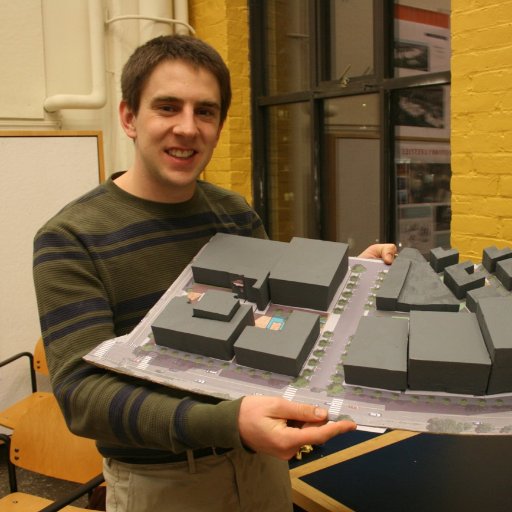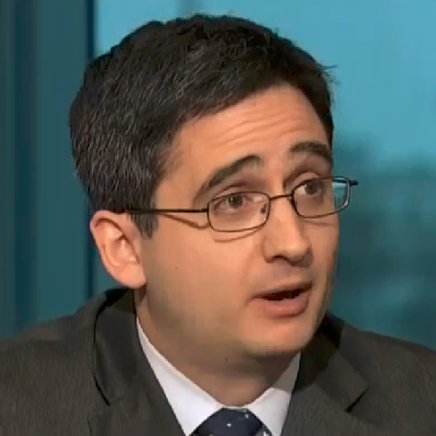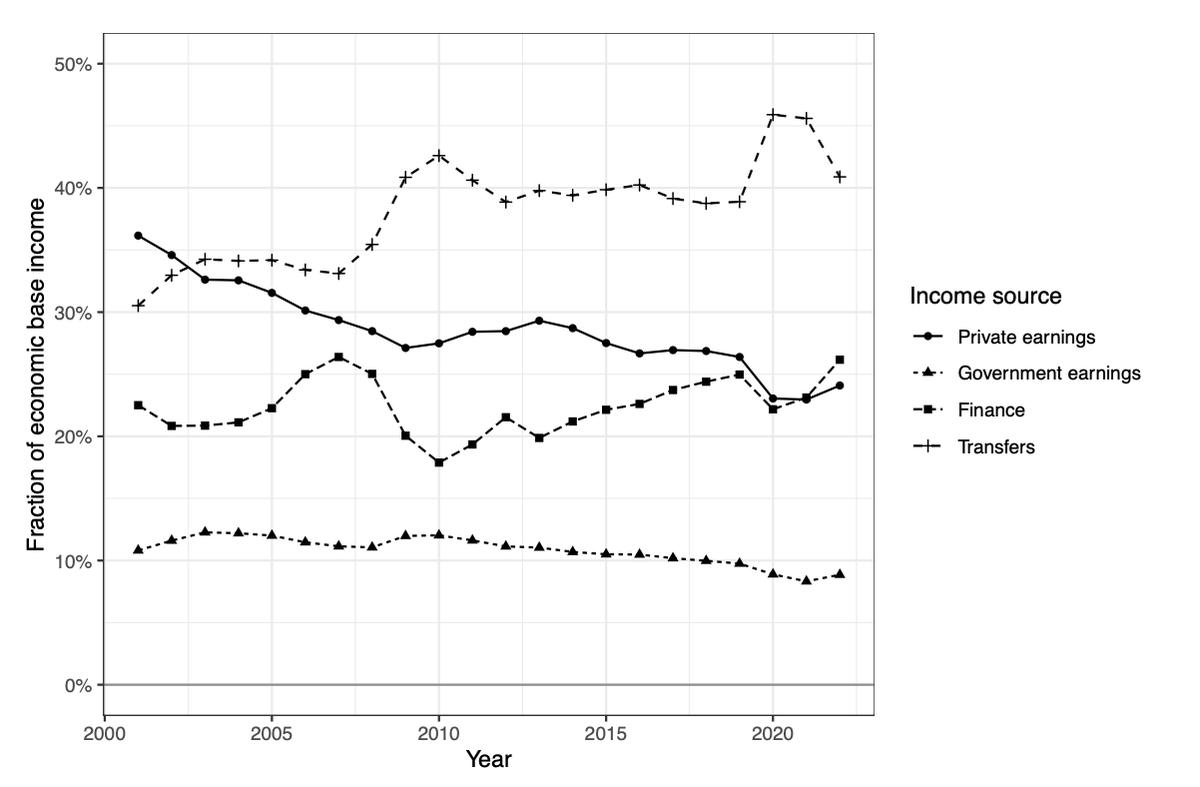
Robert Manduca
@robertmanduca
Followers
2K
Following
2K
Media
233
Statuses
2K
Assistant Professor, @UMSociology. Research on cities and inequality. All personal problems are structural problems.
Ann Arbor, MI
Joined February 2010
I have a new paper out! "Should Social Insurance Programs Count as Wealth? Augmented Wealth in Research and Policy." Published yesterday in Socio-Economic Review @SASE_Meeting
1
1
16
RT @equitablegrowth: In @MarketWatch @robertmanduca helps break down what's at stake for local communities as a result of #Medicaid cuts in….
0
2
0
RT @equitablegrowth: "Cuts to social programs will have a major impact on local economic activity." Social programs are a key part of the r….
0
3
0
Appreciate the engagement from @oren_cass -- sounds like we agree on the extent to which many communities depend economically on Medicaid, SNAP, and other transfer programs. The question is how to move forward.
This is the inevitable endpoint of an economic model that concentrates gains in a narrow set of sector and geographies and then promises that the "winners can compensate the losers." Huge swathes of the country literally become "exporters of need," depending upon their.
0
0
1
RT @equitablegrowth: Local economies across the U.S. may face significant economic fallout from the #ReconciliationBill. This impact is e….
0
1
0
@equitablegrowth @CapeCoral @InnovateEconomy @SocServReview @catalinaanampa @hochschild_r @nytimes @RepHalRogers A lot of discussion of the reconciliation bill has focused--rightly--on the consequences for beneficiaries of these programs. 11 million people are at risk of losing Medicaid coverage, and 4.5 million stand to lose SNAP. That's a ton. But the economic impacts may be even wider.
0
1
3
@equitablegrowth @CapeCoral @InnovateEconomy @SocServReview @catalinaanampa In Kentucky's 5th district, recently profiled by @hochschild_r for the @nytimes, Medicaid makes up a quarter of the entire economic base. The SNAP and Medicaid cuts would be like losing one-third of all traded private sector industries cc @RepHalRogers.
1
1
2
@equitablegrowth @CapeCoral @InnovateEconomy @SocServReview @catalinaanampa If we look just at the proposed *cuts* to Medicaid and SNAP, it's the economic equivalent of Maine losing its entire forestry and paper manufacturing industries, all at once--or Alaska losing 60% of its oil and gas industry.
1
1
1
@equitablegrowth @CapeCoral @InnovateEconomy @SocServReview @catalinaanampa Put another way, Medicaid contributes roughly as much to Detroit's economy as car manufacturing, more to Houston than the chemical industry, almost twice as much to Los Angeles as motion picture production--these are big numbers!
1
1
3
@equitablegrowth @CapeCoral @InnovateEconomy @SocServReview @catalinaanampa As I describe in a post for @equitablegrowth, these programs are major foundations for local economies nationwide. Medicaid alone makes up about 11% of the economic base of US regions, and SNAP is about 1.4%
1
1
0
@equitablegrowth @CapeCoral @InnovateEconomy @SocServReview @catalinaanampa Shifting from economic geography to policy, what does this mean for the current reconciliation bill? The House version is set to cut Medicaid and SNAP by about $1.2 trillion over the next 10 years--that's roughly a 12% cut to Medicaid and 27% to SNAP
1
1
1
@equitablegrowth @CapeCoral @InnovateEconomy Transfer income is also more equitably distributed across regions than other income--in a @SocServReview article last year, @catalinaanampa, Analidis Ochoa, and I found that transfers reduce geographic inequality by 12%
1
0
0
@equitablegrowth @CapeCoral What's driving the change? @InnovateEconomy reported last fall about the "Great Transfer-mation" across the US, attributing it to 1) aging populations, 2) rising healthcare costs, and 3) slower earnings growth
1
0
0
@equitablegrowth In some parts of Florida--looking at you, @CapeCoral!--traditional traded industries make up just *5 percent* of the economic base. The rest of the economy is based on retirement savings, pensions, Social Security, Medicare, etc.
1
0
0
@equitablegrowth Financial income made up another 26%. Traded sector earnings were just 24%: less than either of the other sources, and down from 35% in 2001.
1
0
1
@equitablegrowth I compute the share of all economic base income that comes from transfers, financial income, and earnings in traded industries (the standard definition). The results are pretty striking: in 2022, transfer payments accounted for *40 percent* of the economic base across US regions
1
0
2
@equitablegrowth Usually, researchers define the economic base as traded industries only. But selling products to other cities or countries isn't the only way money can enter a local economy. I explore two others: financial income and government transfers.
1
0
0
@equitablegrowth The two sectors play different roles in the local economy: most residents are employed by the local sector, which typically accounts for about 2/3 of jobs. But the traded sector is the ultimate foundation of a region's economic viability--its economic base
1
0
0
@equitablegrowth Other industries--some examples are restaurants, grocery stores, home construction, mechanics--serve local, not national/global demand. These are the "town fillers," now usually called the "local" or "non-basic" sector
1
0
0
@equitablegrowth Basically, some industries--think manufacturing, farming, etc., but also film production or high finance--sell their products on national or global markets, bringing money into their local economies. They're the "town builders", today "traded industries" or the "basic sector"
1
0
0










